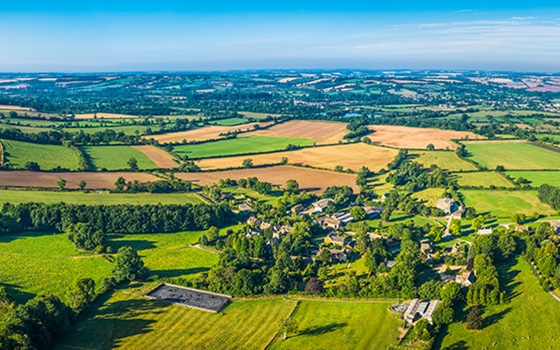-
InsightsInsight - Agriculture and Rural, Planning - POSTED: February 8 2021
What will proposed changes to the planning system mean for rural landowners?
- Share this article
- Print this article
-
-
In August 2020 the UK government launched a consultation exercise on the most radical reforms to the planning system in decades.
Details were set out in the government’s white paper Planning for the Future. A consultation on the proposals closed on 29 October and the government is now considering whether to take the forward the reforms and, if so, how they will do this.
The government’s objective is to speed up and modernise the planning system, and significantly increase the number of new homes being built. There have been many attempts to achieve this objective over the years, but these have generally built upon the existing system, which was devised in 1947.
In his forward to the white paper, the Prime Minister describes the current proposals as “radical reform unlike anything we have seen since the Second World War”.
Under the existing planning system, local planning authorities each draw up a local plan identifying sites which are suitable for housing development. Local planning authorities issue regular ‘calls for sites’ through which owners can put forward their land for inclusion in the local plan.
Sites identified in the local plan as being appropriate for development still require a specific grant of planning permission before they can be developed. Normally, outline planning permission is obtained in the first instance; this establishes the principle of development, with reserved matters approval subsequently secured for the detail.
How the planning system would change
If the government’s proposals for reform are implemented, then it will result in a move away from local decision making on individual applications towards something more akin to a zoning system. All land in England will be put into one of three categories:
- land suitable for growth
- renewal areas and
- protected areas.
Growth Areas
Growth Areas would be deemed to be suitable for ‘substantial development’. Sites in this category would automatically have outline planning permission. It is likely to apply to areas suitable for new settlements and urban expansion, which could include existing rural sites, as well as previously developed land or regeneration areas.
For landowners who are interested in the development potential of their land, and whose land falls into a Growth Area, the proposals set out in the white paper will include some welcome changes. For example, the new proposal would remove some of the lengthy parts of the current process relating to granting outline planning permission. However, feedback on the consultation will ultimately decide exactly how this looks in its final format.
Renewal Areas
Renewal Areas would be considered suitable for smaller scale development. The Government envisages that this will include existing built areas but also small rural sites within or on the edge of villages.
Planning permission will still need to be obtained, but there will be a presumption that it will be granted for certain uses considered suitable in such areas.
Protected Areas
Most rural land will fall into the category of Protected Areas and will be subject to more stringent planning controls.
The white paper includes a list of land likely to be in this category, including Green Belt, Areas of Outstanding Natural Beauty, Conservation Areas, Local Wildlife Sites and areas at risk of flood. Significantly it also includes areas of existing open countryside – unless identified as a Growth or Renewal site.
Reactions to the proposed reforms
Concerns have been raised about the proposals in the white paper by environment and conservation-focused organisations.
The National Trust, conservation charity and also the UK’s largest private landowner, has published an open response to the white paper addressing some key concerns. Notably, they identify the need for clear mechanisms for considering assets on rural land, such as hidden archaeology or important and endangered species.
Similarly, the trust notes the requirements for the planning system to work with other initiatives to help tackle climate change and highlight a lack of detail on this, as well as how it will support the government’s 25 Year Environment Plan.
For landowners keen to ensure the existing rural character of their land is preserved, further clarification about how the proposals will support this may be needed.
This shift towards zoning, proposed by the government, will require interested parties to engage in the local plan making process at an early stage. Whether you looking to develop or protect your rural land, failing to ensure that sites are appropriately ‘zoned’ at an early stage will have significant consequences for future development.
This article was first published in the January 2021 edition of South East Farmer.
This content is correct at time of publication
Can we help?
Take a look at our Agriculture and Rural page for useful information, resources, guidance, details of our team and how we may be able to help you
-
Key contact:
Get in touch
Please fill out the below form or alternatively you can call us on 01622 690691

